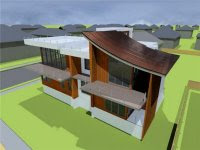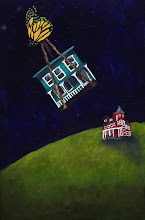
I have planted hydrangeas at every home I've owned because they remind me of my grandparents' backyard, a safe and loving place. But what does this have to do with architecture? Many architecture theorists and child development psychologists would agree that one's environment as a child has a profound impact on who he becomes as an adult. In fact, some have argued that as adults, we purchase homes and redecorate them to recapture or readdress our childhood experiences. In today's New York Times, Penelope Green addresses the topic, suggesting that architects need to take the psychological pulse of the client to best serve them. This seems a bit far-fetched in light of all of the other parameters an architect has to consider, but I think it's good advice for the client: Know thyself. Personally, I despise wide-open spaces, so it makes sense for me to have a 665 square foot cottage and not a loft. The book Some Place Like Home by Toby Israel does a great job analyzing design psychology as a means of creating so-called ideal places. When we bought a weekend house, James and I definitely considered the children and their interaction with it. We thought about our own childhoods, especially James in his family beach house on the coast of Alabama, and what we decided was that by limiting the outside stimulus, children explore the world differently. In planning the addition, we are giving our children "sleeping pods" which are very basic (and small) spaces primarily for sleeping. I'd rather they walk down to the creek and search for frogs or read a book on the porch swing. By limiting their interior space, there's more incentive to get outside.
Another great book about house psychology and history is House Thinking by Winifred Gallagher. Each chapter takes readers through the historical development of different rooms in a house. Of course, I'm hoping that as Potic Cottage evolves, it helps inform our children's sense of space in a modern and ecologically aware manner.





No comments:
Post a Comment